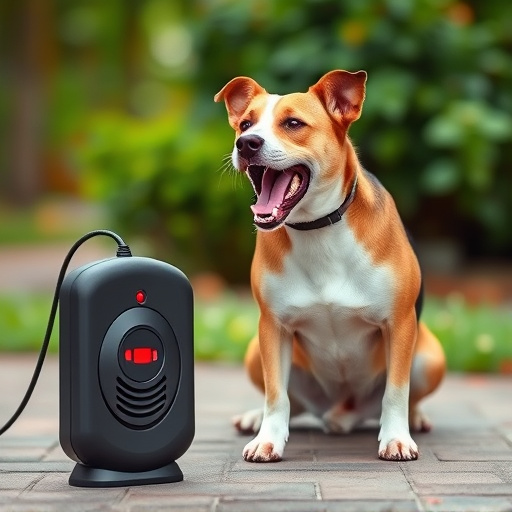Sonic dog repellers, using high-frequency sound waves, offer a humane and versatile solution for deterring canine intruders. They can be installed in various locations like gardens or indoors near entry points, targeting dogs' sensitive hearing to disrupt their balance without harm. Effectiveness depends on environment and local canine demographics; higher frequencies are needed in urban areas with tall buildings, while lower frequencies work better in rural open spaces. For optimal results, install the repeller strategically near common dog entry points, move it regularly for enhanced coverage, and avoid proximity to residential windows and doors.
Unfurl a new chapter in your peaceful paradise with a sonic dog repeller – a humane and effective solution to deter canine intruders. This guide unravels the science behind these devices, illuminating how specific frequency ranges target dogs’ sensitive hearing. We’ll navigate optimal installation sites for maximum efficacy, ensuring you harness the power of sound to reclaim your outdoor spaces. Discover the ideal setup for your environment, from urban balconies to rural properties, and embrace a harmoniously peaceful haven.
- Understanding Sonic Dog Repellers: How They Work
- Choosing the Right Frequency Range for Your Environment
- Optimal Installation Locations for Maximum Effectiveness
Understanding Sonic Dog Repellers: How They Work
Sonic dog repellers are innovative devices designed to deter canine intruders using sound waves. Unlike traditional repellents that rely on sprays or physical barriers, these repellers utilize high-frequency sound to create an unpleasant sensation for dogs, encouraging them to stay away from specific areas. The technology is based on the principle that dogs have a more sensitive hearing range than humans, allowing the device to emit frequencies that are inaudible to us but disrupt their sense of balance and well-being.
These repellers are versatile and can be installed in various locations, such as gardens, patios, or even indoors. The ideal placement is near areas where dogs are likely to enter, like fences, gates, or entry points. Strategically positioning the devices can create a protective buffer zone, ensuring peace of mind for pet owners and offering a humane solution to keep dogs at bay without causing them harm.
Choosing the Right Frequency Range for Your Environment
When considering a sonic dog repeller, understanding the frequency range is key to its effectiveness. Different environments require specific frequencies to ensure optimal performance. For instance, if you’re installing the repeller in urban areas with tall buildings, a higher frequency range (e.g., 5000-8000 Hz) might be more suitable as sounds travel better at these frequencies in dense, reflective environments. On the other hand, rural settings with open spaces may benefit from lower frequencies (around 3000-5000 Hz), allowing for a wider area of coverage without excessive sound projection.
The choice should also consider the type of dogs in your area. Smaller breeds are more sensitive to higher frequencies, while larger ones might require stronger, lower-pitched sounds. Properly selecting the frequency range ensures that the repeller not only discourages dog intrusions but does so humanely and effectively, tailored to your specific surroundings and canine neighbors. For optimal results, refer to the product’s specifications and consult with experts or fellow users regarding the best frequency range for your intended installation location, such as where to install a sonic dog repeller in your yard or garden.
Optimal Installation Locations for Maximum Effectiveness
To achieve maximum effectiveness, the optimal installation location for a sonic dog repeller is near areas where dogs frequently enter or gather. This could be along fences bordering gardens, parks, or public spaces, as well as on verandas or balconies. The device should be mounted at eye level or slightly elevated to capture the high-frequency sounds effectively. Avoid installing it too close to residential windows or doors, as the sound waves might reflect and disturb neighbors.
Additionally, consider positioning the repeller in areas where dogs tend to loiter or create disturbances, such as near trash cans or bins. The sonic waves can help deter dogs from these locations without causing harm or distress. Regular movement of the device, like swinging it slightly or adjusting its angle, can also enhance its reach and overall effectiveness.
Sonic dog repellers offer a humane and effective solution to keep dogs away from specific areas. By understanding how these devices work, selecting the appropriate frequency range for your environment, and strategically choosing installation locations, you can create a peaceful space that discourages unwanted canine visitors. Remember, the key to success lies in optimal placement, ensuring the repeller’s frequency reaches the intended area without causing harm or distress to nearby pets and people.
